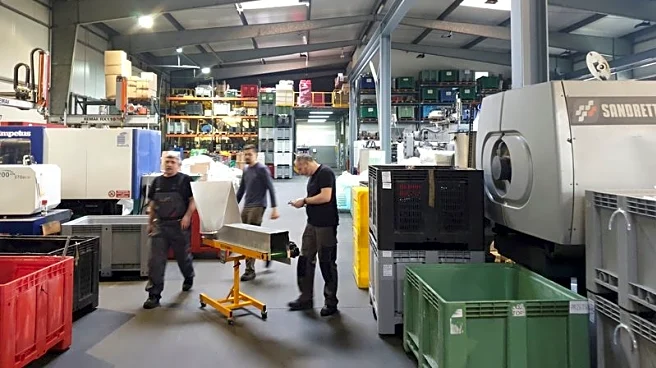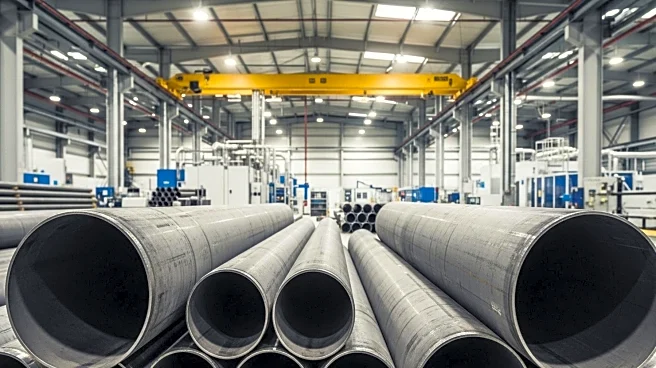What is the story about?
What's Happening?
U.S. manufacturing activity continued to decline in August, marking the sixth consecutive month of contraction, as reported by the Institute for Supply Management (ISM). The Manufacturing PMI registered at 48.7%, slightly up from July's 48%, yet still below the 50% threshold that signifies growth. The report highlighted a mixed scenario where new orders returned to growth at 51.4%, but production fell back into contraction at 47.8%. Prices continued to rise, albeit at a slower pace, while employment remained weak at 43.8%. The report noted that 69% of manufacturing GDP contracted in August, an improvement from 79% in July, with only 4% in 'strong contraction' territory. Despite some positive signs, such as growth in new orders, the sector faces ongoing challenges including rising input costs and cautious hiring.
Why It's Important?
The continued contraction in U.S. manufacturing is significant as it reflects broader economic challenges and pressures within the sector. Manufacturing is a key component of the U.S. economy, influencing employment, trade, and overall economic health. Persistent contraction can lead to reduced economic output and impact related industries such as logistics and retail. The mixed signals in the report, with new orders growing but production and employment contracting, suggest uncertainty and potential volatility in the sector. This situation may affect investor confidence and influence policy decisions aimed at stimulating growth and addressing structural issues within manufacturing.
What's Next?
The outlook for U.S. manufacturing remains uncertain, with potential implications for economic policy and business strategies. Stakeholders may focus on addressing the factors contributing to contraction, such as input costs and employment challenges. Policymakers might consider measures to support manufacturing growth, including incentives for innovation and investment in technology. Businesses may need to adapt to changing demand dynamics and explore opportunities in sectors showing growth, such as Food, Beverage & Tobacco Products. Monitoring future PMI reports will be crucial for understanding the trajectory of the manufacturing sector and its impact on the broader economy.
Beyond the Headlines
The ongoing contraction in manufacturing raises questions about the long-term competitiveness of U.S. industries in the global market. It highlights the need for strategic investments in technology and workforce development to enhance productivity and innovation. The sector's challenges also underscore the importance of supply chain resilience and adaptability in the face of economic fluctuations. As manufacturers navigate these complexities, there may be opportunities for collaboration and partnerships to drive sustainable growth and address systemic issues.
AI Generated Content
Do you find this article useful?














